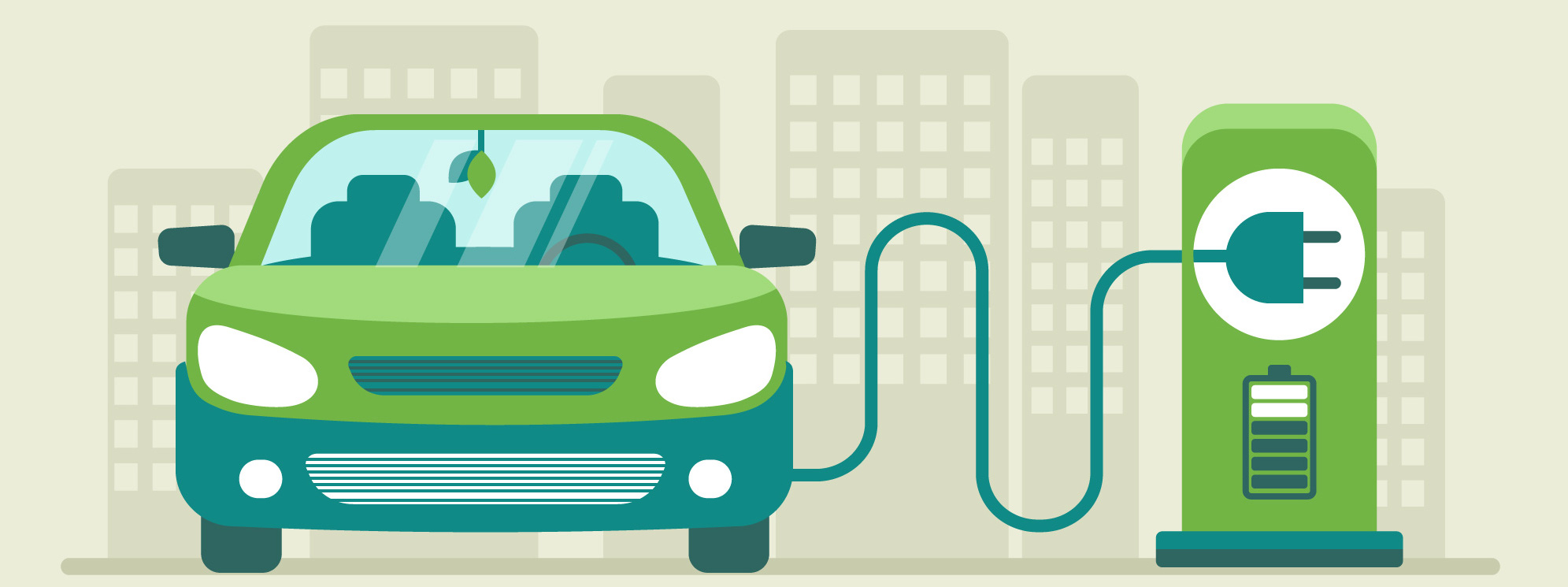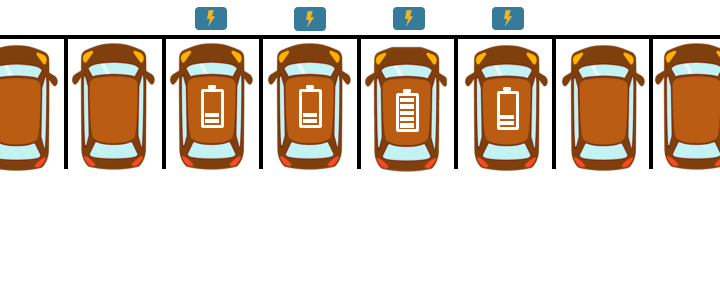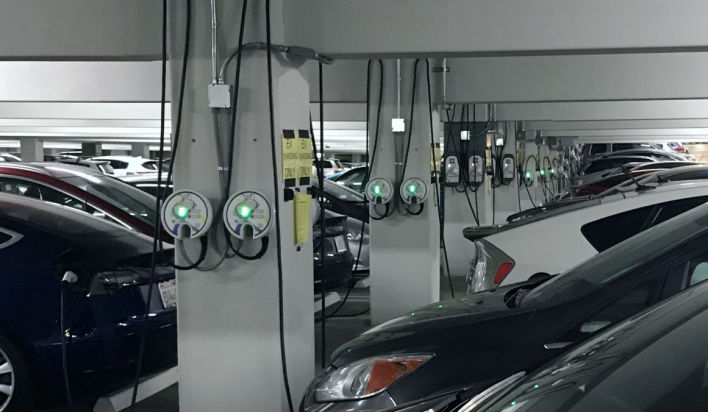
Adaptive Charging Breaks Down Barriers to Electric Vehicle Adoption
Zachary Lee | June 4, 2019
One of the greatest barriers to the widespread adoption of electric vehicles is the lack of charging infrastructure. While today over 80% of EV charging is done at home, universal electrification of the transportation sector will require installing charging stations everywhere. Gone will be the days of taking a trip to the gas station once a week. Instead, cars will be charged where they already spend most of their time: in your garage and in the parking lot at work, the gym, and the grocery store. With charging ports in every parking spot, drivers can be confident they will always have the energy they need to get on with their day. This infrastructure will require significant investment, but with new technology developed at Caltech, the days of a charging port in every space might be closer than you think.
Why can't we do this already?
At first glance, the solution seems simple; how hard can it be to install a couple of plugs? The reality, however, is more complex. To understand why, consider that most EV charging ports installed today deliver about 7 kW of power. To put that in perspective, it’s over 4 times the average power draw of a California home. This means that charging a parking lot worth of electric vehicles using conventional systems would require a neighborhood worth of electrical infrastructure. That's an investment few offices, apartment buildings, or parking garages would be willing to make.
Energy vs. Power
All might seem lost, but there is hope. To see why, we need to understand that there is a difference between power and energy. Energy is what we want to store in our electric vehicle's battery, while power is the rate at which we deliver that energy. While many EV batteries can store upwards of 60 kWh — which would take over 8.5 hours to charge from empty at 7 kW — we find that most users only need about 10 kWh a day or about 1.5 hours at 7 kW. This is far less time than the average car spends idle while its driver is working or even enjoying a movie. The difference between the time necessary to charge at maximum power vs. the time a car is left parked gives us flexibility. Adaptive charging can use this flexibility to reduce the need to install costly infrastructure.

There are lots of ways to deliver 10 kWh over the course of a day.
The power of scheduling
This brings us to the concept of scheduling. If we can control how fast each EV charges throughout the day, we can deliver more energy, without needing to increase the overall power capacity of the system. One simple way to do this would be to just divide the capacity by the number of EVs. However, this leaves a lot to be desired. What if Mike will be at the office all day, while Sarah needs to leave early to meet with a client? It makes sense for Sarah to charge faster in the morning while letting Mike charge in the afternoon. When we consider doing this on a larger scale, however, the scheduling problem can get very complicated very quickly.

A simple example of scheduling charging for Sarah and Mike.
Already, people in offices with only a few charging ports have devised ad-hoc systems to schedule charging. Usually this plays out with a driver sending an email to a mailing list once their car is charged. They can then swap spaces with another EV driver so the new driver can charge for the rest of the day. Some charging companies have even built features like virtual queues to support this type of behavior. However, asking drivers to leave their office in the middle of the day or, worse yet, swap spaces in the middle of the night at an apartment complex is both annoying and inefficient. Instead, with a charging port in every space, we can allow all drivers to plug in immediately. Smart algorithms can then decide how to schedule charging throughout the day.

The Adaptive Charging Network
The Adaptive Charging Network, ACN for short, was developed at Caltech to develop these types of smart scheduling algorithms. The ACN currently has over 80 EV charging ports in a garage on the Caltech campus which share a power limit of 300 kWh (enough for 42 conventional ports). The system currently charges an average of 65 EVs a day and over the last 3 years it has delivered over 2.3 million miles worth of charge.

The adaptive charging network at Caltech.
To schedule EV charging so that it does not overload the system's power limit, we use an adaptive scheduling algorithm developed at Caltech. When a driver plugs into the ACN, they provide their estimated departure time and energy request through a mobile app. The algorithm then uses this information to determine how to best schedule charging for all users so that they receive their desired energy before their departure time. One of the most challenging parts of scheduling charging in a real system is that the algorithm does not know what the future holds. As new EVs arrive, or when users need to change their input parameters, the algorithm must adapt its schedule accordingly. With adaptive scheduling, we have shown that the charging demands of most office charging systems can be met with 75% lower infrastructure capacity than conventional systems. That means we can realize our dream of a charging port in every spot at minimal cost.
To see how important scheduling process can be, let’s consider the simple case of 5 EVs and a power limit of 12.5 kW. With conventional charging this would be enough to overload the system, but with adaptive charging, we can spread the charging throughout the day and stay below the power limit.

Adaptive charging is able to stay below power limits while still meeting everyone's energy needs.